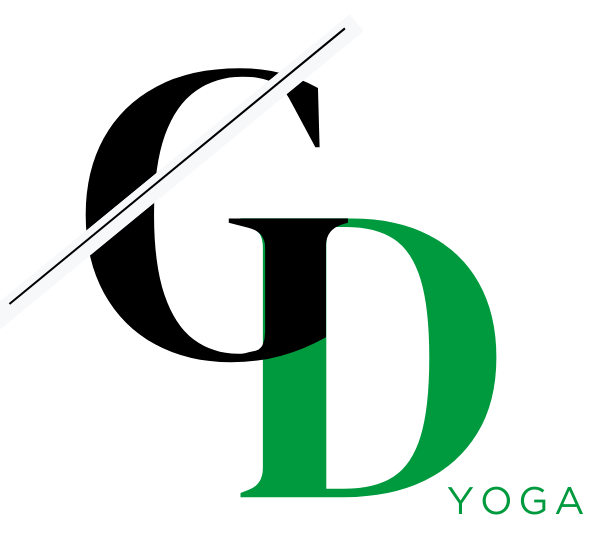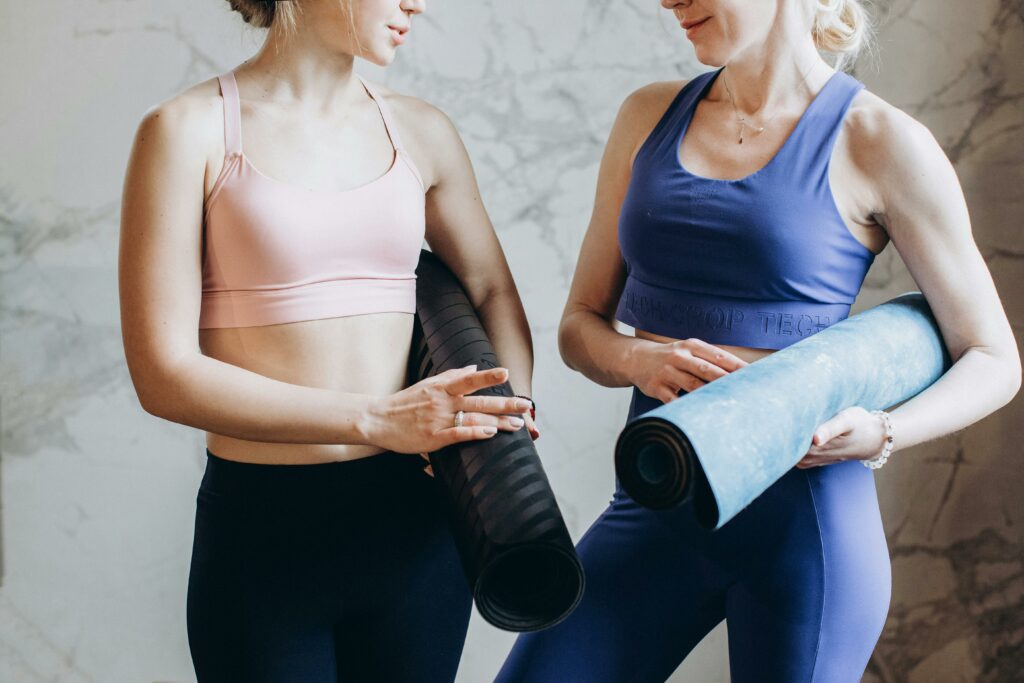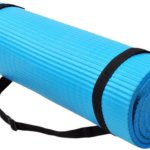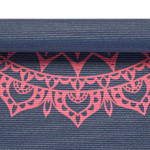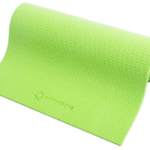Contents
- Introduction
- Examining the Basics: 3 mm vs 5 mm Thickness
- Comparison of Features: 3 MM vs 5 mm Yoga Mats
- Which Practices Suit 3 MM vs 5 mm Yoga Mats Best
- 3 mm yoga mat vs 5 mm for beginners
- How 3 MM vs 5 mm Yoga Mats Affect Comfort and Bodily Support During Practice
- Durability and Lifespan: 3 MM vs 5 mm Yoga Mats
- Portability and Storage: Comparing 3 MM vs 5 mm Yoga Mats
- Conclusion
Introduction
When I first embarked on my yoga journey, the wide assortment of yoga mats available initially overwhelmed me. The difference between 3 mm and 5 mm yoga mats stood out as a critical choice, one that directly impacted my practice. Through time and experience, I’ve gathered insights I’m eager to share, especially for those pondering over questions like “Is 5 mm yoga mat too thick?” or “Is 3 mm yoga mat too thin?”
Examining the Basics: 3 mm vs 5 mm Thickness
For beginners, this choice can be crucial, shaping their initial experiences and comfort during yoga sessions.
For those concerned about whether a 3 mm yoga mat is too thin or if a 5 mm yoga mat is too thick, I’ve personally found that it majorly depends on the type of yoga you practice and your sensitivity to the floor’s hardness. High-impact styles might benefit more from the cushioning of a 5 mm mat, whereas practices that emphasize balance and grounded poses could fare better with a leaner, 3 mm mat that allows for a firmer connection with the floor.
Comparison of Features: 3 MM vs 5 mm Yoga Mats
Starting with the 3 mm yoga mat, I quickly learned that it’s incredibly versatile. It’s the perfect companion for those of us who love practicing standing poses, balancing poses, and crave a deeper connection with the floor. The thinness of the mat offers a firm surface that promotes balance and stability, essential aspects of a yoga practice that requires precision in poses. Plus, for someone who’s always on the go, I found the lightweight nature and portability of the 3 mm mat a huge plus. It’s just so easy to roll up, toss in my bag, and carry from one class to the next without any hassle.
However, while its thinness allows for superior stability during intricate poses, it might not be the best if you’re looking for a cushiony feel under your joints. Especially during longer practice sessions or meditation, when comfort becomes key, the 3 mm mat might feel a bit lacking.
That’s where the 5 mm yoga mat stepped in. Is a 5 mm yoga mat good? Absolutely, especially if you’re like me and sometimes need that extra padding under your knees during a Crescent Lunge or want your hips to feel more supported during Pigeon pose. The 5 mm mat is noticeably thicker, offering an enhanced cushioning effect that’s gentle on the joints.

Which Practices Suit 3 MM vs 5 mm Yoga Mats Best
When it comes down to choosing between a 3 mm and a 5 mm yoga mat, I’ve discovered that the difference between 3 mm and 5 mm yoga mat significantly impacts your practice based on your preferred style of yoga. Let’s dive into which practices are best suited for each thickness.
A 3 mm yoga mat offers a solid base that’s ideal for styles requiring a lot of standing or balancing poses, like Ashtanga or Vinyasa. This thin mat is fantastic for those who want to feel a strong connection to the floor, providing that stable foundation needed for complex poses. It’s also a great pick for seasoned yogis who prioritize precision and stability in their practice. Therefore, for beginners eager to dive into dynamic flows, a **3 mm yoga mat might actually offer the support they need to build confidence in their poses.
If your yoga practice leans towards slower-paced styles like Yin or Restorative yoga, then is 5 mm yoga mat good? Absolutely. The extra thickness provides ample cushioning, necessary for floor-based poses where you need to hold positions for extended periods. This reduces the strain on your joints and bones, making your practice more comfortable and sustainable in the long run.
Therefore, is 3 mm or 5 mm yoga mat better? This issue depends on your personal practice. If you’re delving into more meditative, slow-paced styles or dealing with sensitivity in your joints, the 5 mm yoga mat serves as a supportive platform, allowing you to focus on your breath and posture rather than discomfort. In contrast, if your practice is more about flow and balance, then a 3mm yoga mat might be more suitable for you.

3 mm yoga mat vs 5 mm for beginners
Choosing a yoga mat feels a bit like picking the right pair of shoes. It’s gotta fit just right. No need to worry about “Is 3 mm too thin for a yoga mat?” or “Is 5 mm yoga mat too thick?” The difference between 3 mm and 5 mm yoga mat isn’t just about the numbers. It’s about who’s using them.
Beginners with yoga mats might get caught up in deciding between 3 mm yoga mat vs 5 mm . It’s understandable. A thinner mat, like the 3 mm, offers a solid connection to the floor, making it easier to find your footing and balance. A thicker 5mm yoga mat can make your practice more comfortable. So, if you’re just stepping into the world of yoga, I recommend opting for a 5mm yoga mat. It will ensure your comfort, allowing you to focus not so much on perfecting each pose but on enjoying a comfortable practice experience. This comfort is crucial for maintaining your practice in the beginning. Don’t set too high a bar for yourself right away. Once you’ve reached a certain level of practice and start to seek a more professional yoga experience, that’s the time to switch to a 3mm yoga mat. Many wonder, “Is a 3 mm yoga mat too thin?” From my experience, it’s not about being too thin but about offering stability, which is crucial as you’re learning the ropes.In this transition phase from beginner to professional, starting with a 3 mm mat can be beneficial because it helps in understanding and feeling each posture’s alignment without too much cushioning to disrupt your movements. The balance and immediate ground feedback provided by 3mm yoga mats make it easier for you to execute and maintain a wider variety of yoga poses.

How 3 MM vs 5 mm Yoga Mats Affect Comfort and Bodily Support During Practice
First off, let’s talk about the commonly asked question: is a 3 mm yoga mat too thin? For folks like me with sensitive joints or those who engage in a lot of kneeling or lying down poses, a 3 mm mat might not offer enough cushioning. It’s been my experience that while I enjoy the stability it offers for standing poses, I tend to feel the hardness of the floor more than I’d like when resting my knees or elbows on the mat.
On the flip side, is a 5 mm yoga mat good? Absolutely, especially when considering joint protection. The extra thickness provides not just the grip needed for various asanas but also a generous cushioning for the knees, which might be jolted or strained during certain postures. It’s this added padding that helps create a barrier between your joints and the hard floor, reducing the risk of discomfort and potential injuries.
is 5 mm yoga mat too thick? It’s a valid concern, especially for individuals focused on balance and alignment. Although it may offer slightly less stability for poses that necessitate a close connection to the ground, remember that stability can be improved through continual practice, especially when compared to concerns like joint pain. And you should choose the type of yoga that suits your joint characteristics more.
Durability and Lifespan: 3 MM vs 5 mm Yoga Mats
A thicker yoga mat, particularly the 5 mm variety, often translates to more durability and a longer lifespan. This doesn’t just come out of the blue; it’s backed by the sheer physics of material wear and tear. The extra cushioning doesn’t just support your joints; it absorbs more impact over time, which means it’s less likely to degrade quickly. .
However, a 3 mm yoga mat without the added buffer, it tends to show signs of wear more promptly if used frequently or in rigorous sessions.
Therefore, whether it’s a 3mm or a 5mm yoga mat, I recommend first purchasing one that offers good value for money. Once your skill level has improved significantly, then consider investing in a more expensive yoga mat.
Portability and Storage: Comparing 3 MM vs 5 mm Yoga Mats
I once thought there wasn’t a big difference between a 3mm and a 5mm yoga mat, considering it’s just a mere 2mm difference in thickness, but they mattered a lot more when I started attending yoga classes across town. That’s when the lighter, thinner 3 mm yoga mat became my go-to. Its ease of transport was unmatched. I could simply roll it up tightly, throw it over my shoulder, and barely notice its weight during my commute. In contrast, my 5 mm mat, while only slightly thicker, posed a bit of a hassle when I was in a rush or when my bag was already brimming with other essentials.
The 3 mm yoga matcompletely outperforms the 5mm yoga mat in scenarios that demand higher mobility.For yogis who are always on the go or love practicing in the great outdoors, the 3 mm yoga mat is a no-brainer. It’s significantly easier to carry around, making spontaneous yoga sessions in the park or on the beach a seamless experience. Moreover, if you’re someone who travels frequently and likes to keep up with your practice on the road, the 3 mm mat is easy to pack and won’t take up much space in your luggage.

Conclusion
Deciding between a 3 mm and a 5 mm yoga mat boils down to what you value most in your practice.To reiterate, a 3mm yoga mat is more conducive to practicing yoga poses, while a 5mm yoga mat can provide a more comfortable experience. Additionally, if you’re frequently on the move, there’s no need to hesitate; the 3 mm mat is your best bet. Ultimately, it’s about finding that sweet spot that aligns with your personal needs and preferences. Happy yoga practicing!
